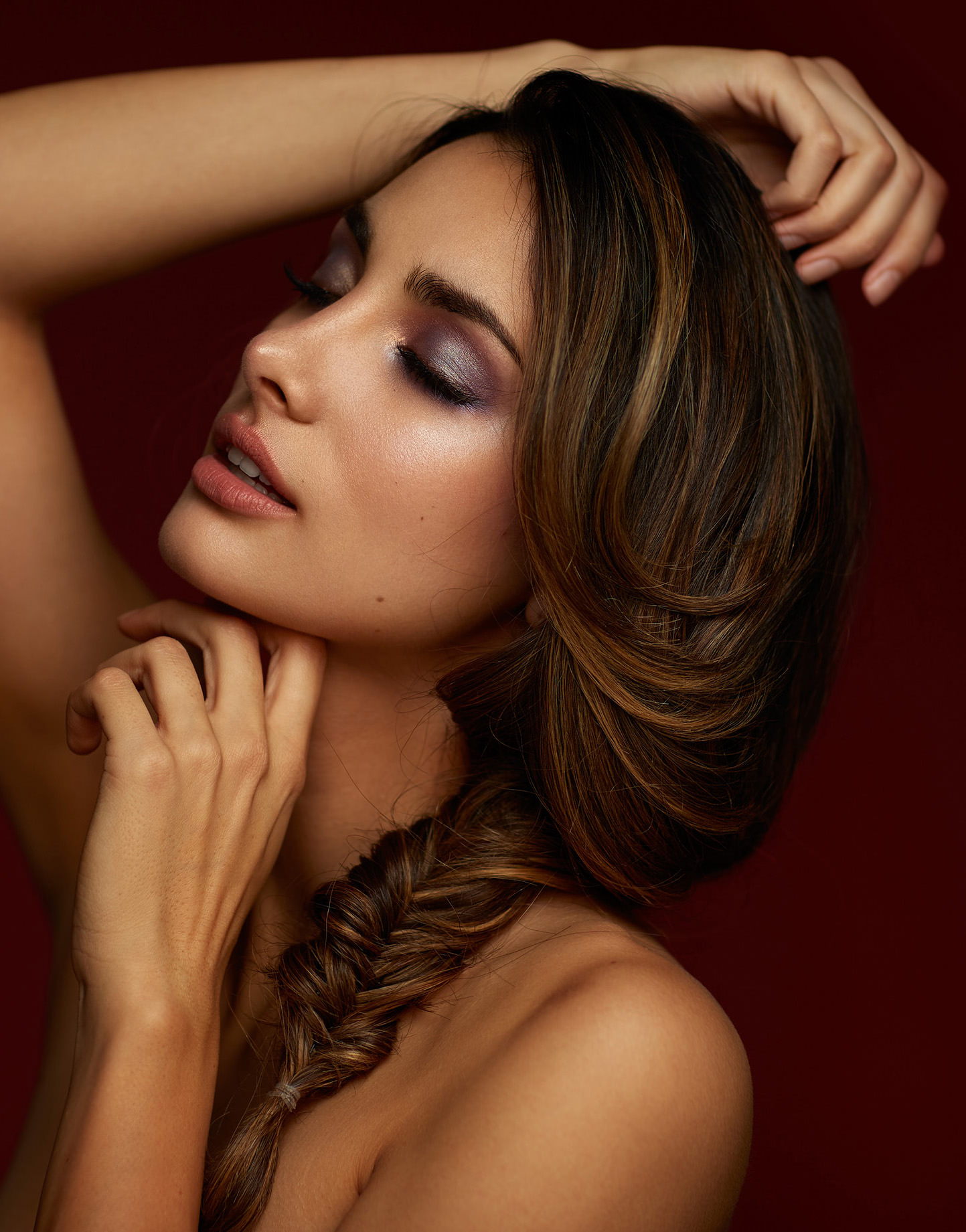I love implementing color in my work. When starting photography, color was the main reason I got into using strobes on location and building my commercial and advertising style. I remember my first time shooting portraits with an DSLR, looking at the washed out sky, and immediately thinking “How do I make this as blue as it is to my eyes?“
And that love for color transitioned into my studio work, opting for bold colored backgrounds instead of your mundane greys and whites. So when the new year came last year, and I decided I was going to market myself as a beauty photographer, my love for color was the basis for the new work I was planning. And so I immediately went out and bought a whole bunch of colored seamless paper rolls.
I can still recall the look on the camera shop employee’s face when I had my short list of bold colors, tucked behind their shelves of whites, wreys, and blacks…which easily outsell all of the other colors.
How to Properly Shoot on Colored Seamless
One of the biggest misconceptions I read when it comes to colored seamless, as that they’re a one-trick pony. A misunderstanding with colored backdrops is that they only have one tone, and can only be used for a single look, but that couldn’t be further from the truth. With how there are lit you’re able to get an incredibly broad range of colors and tonal properties out of them, but this does require you to have a good understanding of how to properly light the seamless.
The easiest way to do this is to light your background and subject independently, so that you have full tonal control over the seamless background, without having to adjust the light on the subject. To do this, you want to have a lot of space between your subject and the background, so that light on the background isn’t reflecting back onto your subject and vice versa.
I could bore you by stating the Inverse Square Law, and how intensity is inversely proportional to distance, but all you need to know is that the space between your subject and background should be at least double the distance that the lights are from their subject. The result is that you have light(s) lighting the background, and light(s) lighting your subject. This separation allows you to get a broad range of colors out of a single roll of seamless, which I’ve demonstrated below, using some of my favorite colors —
As you can see in the example above, the difference between lighting it low powered, and at full power is pretty stark. By isolating your lighting, you’re able to have a broad range of control that helps you match makeup and set pieces, and diversifying your work while using the same tools you usually use.
Implementing Color Theory into Your Seamless Choices
Perhaps the best technique I use when using seamless colors is implementing my knowledge of color theory to better complete an image. For those who have limited knowledge of color theory, Adobe has created an incredible tool that allows you to play with colors, to help find complimentary tones, called Adobe Color. A quick ten minutes using this tool will give you a greater grasp on how colors work with each other, and allow you to use colored seamless more effectively to help complete your image. Some examples of these techniques are below.
But colored seamless doesn’t mean having to overuse the traditional ‘gold and teal’ techniques used in all art forms; you can also implement these tools to better match your base skin tones with the scene. Without a doubt, one of my favorite colored papers is called Pecan, for how well it works with a broad range of skin tones. From pale complexions to darker complexions, I’m able to use my understanding of lighting to create images that help match skin tones for a large variety of subjects.
Hopefully, this introduction to seamless colored paper has encouraged you to go out and shoot your next studio shoot with bolder colors. If you too have fallen in love with the more eccentric colors offered by manufacturers, be sure to show us your examples in the comments below!



























